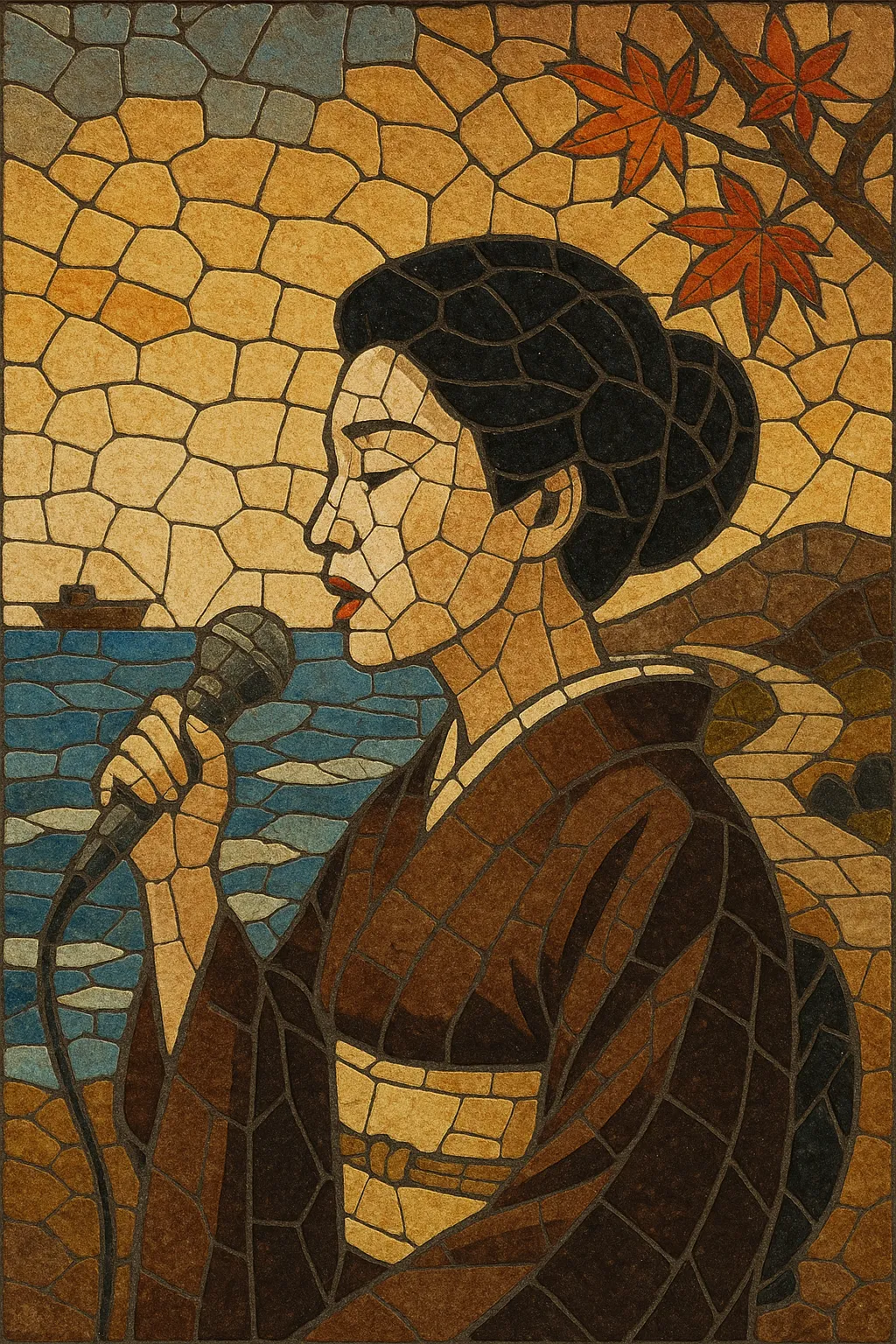Enka is a Japanese popular song style known for its sentimental ballads, expressive vocals with wide vibrato, and dramatic, narrative delivery. It evokes nostalgia for hometowns, bygone eras, and lost love, often painting scenes of coastal ports, country roads, and seasonal landscapes.
Musically, enka blends Western harmonic frameworks with Japanese melodic sensibilities. Melodies often use yonanuki (four-note-omission) major or minor pentatonic variants, creating a “traditional” Japanese color over simple, diatonic progressions. Arrangements favor lush strings, reverb-laden guitars, saxophone obbligatos, and occasional traditional timbres (shamisen or shakuhachi) for color.
Culturally, enka rose to mass popularity during the postwar Shōwa era and remains tied to television variety shows, karaoke bars, and live theater venues. Its performance practice foregrounds pathos, rubato phrasing, and ornamental turns called kobushi.
The term “enka” originally referred to political messaging songs in the Meiji period, but the musical DNA of modern enka is more directly tied to early 20th‑century ryūkōka (popular songs). Ryūkōka blended Western harmony and instrumentation with Japanese melodic and poetic sensibilities, laying the groundwork for enka’s pentatonic-leaning melodies and ballad ethos.
After World War II, the broader sphere of kayōkyoku (Japanese popular songs) diversified. Within it, a distinct ballad idiom coalesced that favored melodrama, nostalgic themes, and ornate vocalism—what came to be recognized as modern enka. Singers such as Hibari Misora and Hachiro Kasuga helped codify the genre’s sound: slow-to-medium tempos, expressive vibrato, and arrangements marrying string sections and Western rhythm sections with Japanese melodic turns.
Television variety programs and large-scale stage performances amplified enka’s reach. Artists like Saburō Kitajima, Harumi Miyako, Hiroshi Itsuki, and Sayuri Ishikawa became household names. Thematically, songs centered on furusato (hometown) longing, stoic perseverance, and bittersweet romance. Karaoke—emerging as a national pastime—further entrenched enka standards in popular memory.
While younger audiences gravitated to J‑pop and rock, enka maintained a devoted fanbase and continued to evolve. Performers such as Fuyumi Sakamoto, Aki Yashiro, Keiko Fuji, and later Kiyoshi Hikawa refreshed the genre with polished production and occasional crossover appeal. Internationally, enka’s vocal style and ballad form influenced Korean trot and its modern offshoots. Today, enka endures on broadcast specials (e.g., year‑end music shows) and in live circuits, upheld by both veteran stars and new interpreters.


